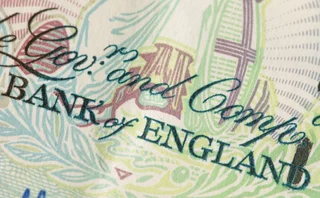
Back to basics
We take you back to the credit basics to review everything you thought you already knew but were too afraid to ask ... Erwan Curien, head of the quantitative team at technology vendor Sophis, explains how credit default swaptions work
The recent growth of the credit protection market has led to development of new products that hedge default probability more cost-effectively. Traditionally, the seller of a credit default swap (CDS) has been put in an increasingly uncomfortable position as credit risk grows. But by buying a CDS option (also called a credit default swaption), the CDS seller can protect himself against a widening CDS spread and reduce his hedging costs.
In short, credit default swaptions are options to enter into a CDS contract at no cost, with a given premium rate called the strike, paid with a single upfront payment. An option to buy credit protection is called a payer swaption and an option to sell credit protection is called a receiver swaption. Just as interest rate swaptions provide protection against yield curve moves, a credit default swaption protects against credit curve moves. But the key difference is that for the latter, the underlying instrument may default before the swaption maturity. In such a case there are three possibilities depending on the contract:
• If nothing is specified in the contract, the swaption can still be exercised (which makes more sense with CDS indices because there is still a remaining part even after the first default events).
• The swaption can have an acceleration clause requiring the option to be exercised immediately after a default.
•The swaption can be knocked out or cancelled.
If the underlying instrument does not default before swaption maturity, the final value will be:
Payer swaption: RPV01.max(Swap Rate - Strike,0)
Receiver swaption: RPV01.max(Strike - Swap Rate,0)
The market standard for pricing these instruments is an adaptation of the option pricing model developed by Black and Scholes in the 1970s. Here the CDS rate is supposed to be lognormal under the probability associated to the CDS numeraire RPV01 at option maturity. This numeraire is the present value of the forward CDS fixed leg considering it pays one basis point. For knockout credit default payer and receiver swaptions, valuation formulae are similar to payer and receiver interest rate swaptions using the CDS numeraire instead of the swap numeraire and the forward CDS spread instead of the forward swap rate. This forward CDS spread is the fixed spread you would agree on today for a CDS starting at a given future date.
For a non-knockout swaption, the holder must add the cost of the protection before the option maturity to the price of the corresponding knockout swaption.
Generally traded credit default swaptions are European, very short maturity options (i.e. one month to one year) and the underlying CDS are mostly five- or 10-year CDS indices, or very liquid high-beta single names. It is not surprising that these instruments are popular with investors as generally speaking they want to have the most liquid underlying instrument for hedging and, in most cases, avoid the default event before the option maturity in order to have the cheapest possible upfront fees. From a theoretical point of view, these instruments are the ones that best fit Black and Scholes assumptions for the CDS spread.
One important point is that even if the Black and Scholes model supposes strong assumptions about CDS spread evolution, if volatilities are chosen such that the pricing of credit default swaptions matches the market price, the greeks are reasonably close to those produced by more accurate models. Like the swaptions market, implied volatilities give a cube of volatilities by strike, maturity and tenor. Investors have to take care because interpolations on this cube are not necessary arbitrage-free.
American and Bermudan swaptions can be exercised during the whole life of the option or at specified dates.
| Glossary Credit default swaption: an option to enter into a CDS contract. Lognormal distribution: a variable has a lognormal distribution when the logarithm of the variable has a normal distribution. Payer swaption: an option to buy credit protection. Receiver swaption: an option to sell credit protection. |
Only users who have a paid subscription or are part of a corporate subscription are able to print or copy content.
To access these options, along with all other subscription benefits, please contact info@risk.net or view our subscription options here: http://subscriptions.risk.net/subscribe
You are currently unable to print this content. Please contact info@risk.net to find out more.
You are currently unable to copy this content. Please contact info@risk.net to find out more.
Copyright Infopro Digital Limited. All rights reserved.
As outlined in our terms and conditions, https://www.infopro-digital.com/terms-and-conditions/subscriptions/ (point 2.4), printing is limited to a single copy.
If you would like to purchase additional rights please email info@risk.net
Copyright Infopro Digital Limited. All rights reserved.
You may share this content using our article tools. As outlined in our terms and conditions, https://www.infopro-digital.com/terms-and-conditions/subscriptions/ (clause 2.4), an Authorised User may only make one copy of the materials for their own personal use. You must also comply with the restrictions in clause 2.5.
If you would like to purchase additional rights please email info@risk.net
More on Markets
Pension funds hesitate over BoE’s buy-side repo facility
Reduced leveraged and documentation ‘faff’ curb appetite for central bank’s gilt liquidity lifeline
Wells Fargo’s FX strategy wins over buy-side clients
Counterparty Radar: Life insurers looked west for liquidity after November’s US presidential election
How BrokerTec, MarketAxess fared during Treasury rout
Electronic bond trading platforms see spike in volumes and small growth in market share, Risk.net analysis shows
Tariff volatility pushes banks to tighten close-outs
Lawyers say dealers are looking to update playbooks for terminating derivatives trades
Dodging a steamroller: how the basis trade survived the tariff tantrum
Higher margins, rising yields and stable repo funding helped avert another disruptive blow-up
SG’s Ungari swaps research for structuring in new QIS role
Veteran researcher and strategist ‘putting things into action’ with new remit
Yen rates losses from tariff volatility top $1 billion
Pay fixed, curve flattener and vol steepener positions were hit hard as yields swung wildly
Markets are mispricing tariff uncertainty, say academics
Johns Hopkins economists warn of risk from changes to the ‘rules of the game’







